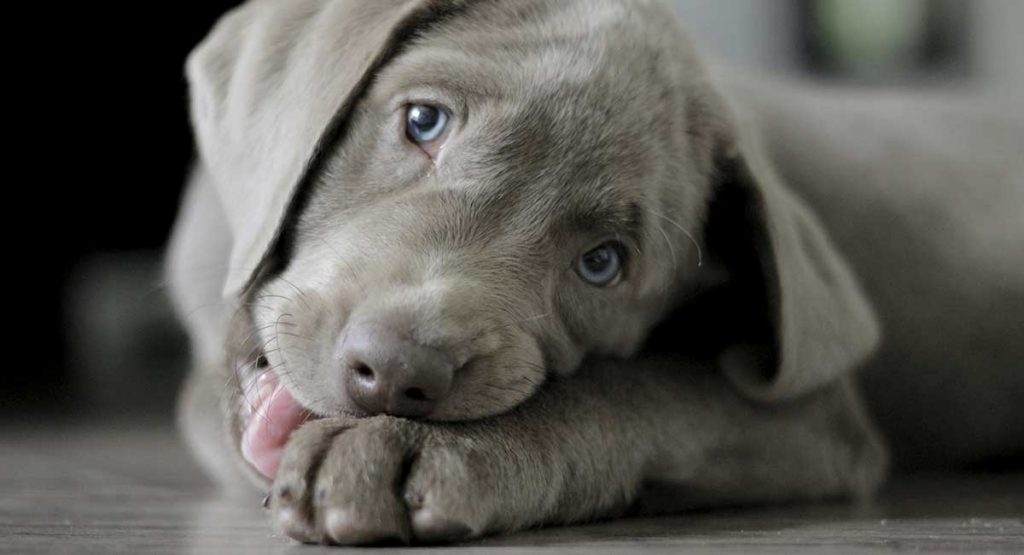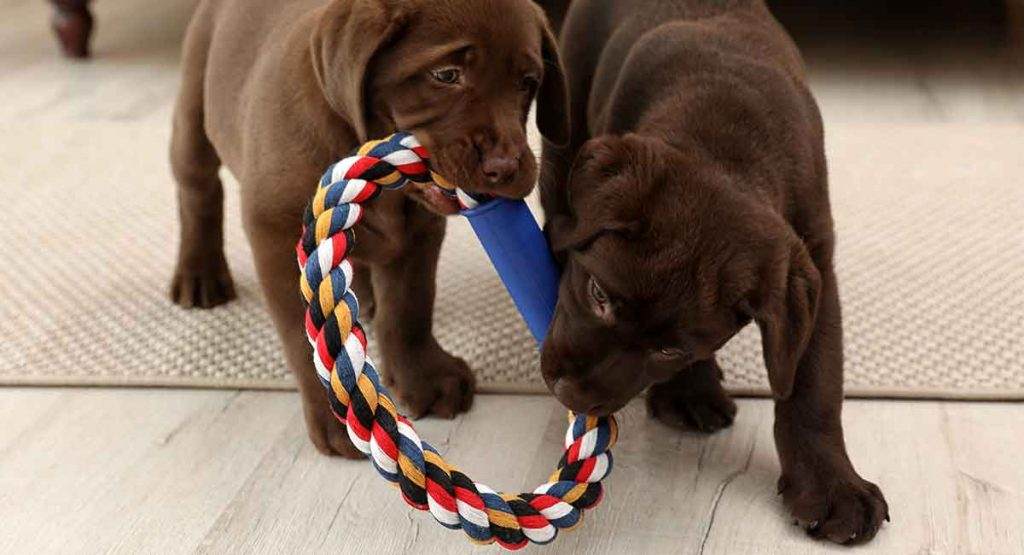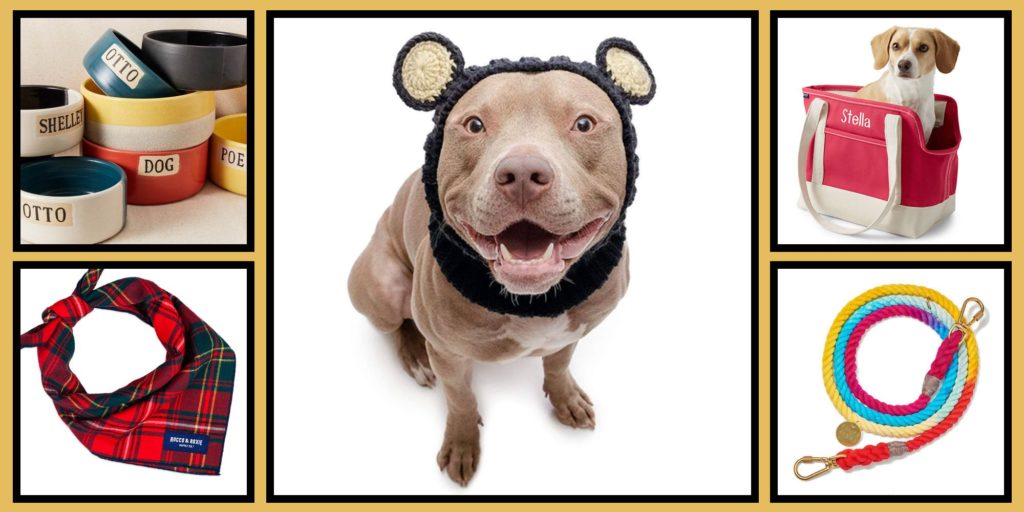In recent times, a new variation of the Labrador Retriever breed has arrived in the market. Despite being a new entry, it has created quite a demand among the dog lovers. People are going crazy for the unique and beautiful body color of the Silver Labradors.
However, there is no dearth of Silver Labs’ adversaries. A large section of the breeders, mostly ‘purists’ or traditional, are strictly against the breeding of Silver Labradors. According to them, Silver Labs are a disgrace to the family of the popular Labrador breed. Moreover, there’s no surety whether they are even Labradors or not.
The Doubtful Status of Silver Labradors
The breeding of one of the most admired breeds, the Labrador Retriever, began around the 1800s. For the next hundred and fifty years, only three colors of Labradors had been found and, therefore, recognized. In fact, various reputed Kennels identify these three colors as the standard colors of Labrador Retriever.
The three recognized colors of Labrador Retrievers are chocolate, yellow and black. While, Black Labs, since inception, have been invariably black. Some form of variation in the colors of Yellow and Chocolate Labradors have been observed over time.
In Yellow Labradors, the color tends to vary between fox red, yellow, and almost white. While the Chocolate colored Labradors vary between dark to medium brown.
Interestingly, Silver Labradors appeared in the market very recently. And because there were no records of such unique colored Labradors for the first 150 years of the breed, some ‘purists’ rejected its Labrador status. They even went to the extent of boycotting the breeding of these dogs.
Now the question is, what causes that unique body color of Silver Labradors. To find out the answer to this question, you need to go through the details of genetics. So read ahead and gratify your curious mind.
Coat Colour is Determined by Heredity

Genes are the mediums through which the progenitors transfer their features to their young ones. This mechanism applies to all living organisms of the world, and dogs are no different. In the case of dogs, each progenitor transfer half of the essential genes to their young ones. However, as far as the puppies’ coat color is concerned, not all genes are relevant. Only a selective of them determine the body color.
There are two “alleles” in every gene, and each allele has two different variants, namely dominant and recessive. The alleles that are relevant to the coat color of dogs are:
- B: Dominant (B) and Recessive (b)
- E: Dominant (E) and Recessive (e)
The different combinations of these alleles will decide the coat color of the offspring.
A combination contains four alleles. Among these four alleles, each progenitor provides one pair of alleles. The resultant combination of alleles determines what will be the body color of the puppy.
Nine Probable Combinations
Now that you have understood the basic units, let us move to the more complicated part; that is the probable combinations. To predict the color combinations, you must discern the process of gene transfer.
To begin with, you must remember that each Labrador parent has two pairs of alleles. Therefore, when two Labradors are bred with one another, both the parents transfer one pair of alleles each to their young ones. For example, if the mother or the father of a Labrador puppy has a gene combination eebb, the puppy will receive one ‘e’ allele and one ‘b’ allele from that parent. Conversely, if the puppy’s parent possesses a gene combination called EeBb, it may transfer an ‘E’ or ‘e’ allele and a ‘B’ or ‘b’ allele to its young one.
Besides the alleles, the parents’ body color will also play a significant role in determining the young ones’ color. For example, if a puppy’s parents are of yellow color, they by no means will inherit any different color. In this context, the ‘B’ alleles won’t play any prominent role in their coat color. On the other hand, if you breed two Black Labradors, their puppies can inherit different body colors like chocolate, yellow and black.
The following Genetics Chart will further enhance your understanding of the whole mechanism of the body colors inherited by Labradors. The top-most row reflects the genes contributed by male Labradors. And the column on the left-hand side reflects the genes contributed by female Labradors:
| Female/Male | EB | Eb | eB | eb |
| EB | EEBB | EEBb | EeBB | EeBb |
| Eb | EEBb | EEbb | EeBb | Eebb |
| eB | EeBB | EeBb | eeBB | eeBb |
| Eb | EeBb | Eebb | eeBb | eebb |
As you can see in the chart, there can be nine potential gene combinations when it is about Labrador retrievers. Among these gene combinations,
- EEbb and Eebb will invariably lead to the production of Chocolate Labradors.
- eeBB, eeBb, and eebb will unfailingly produce Yellow Labradors.
- And Black Labradors will be produced by combinations, EEBB, EeBB, EEBb, and EeBb.
If you study the chart carefully, you will understand that the number of gene combinations for producing Black Labradors is far more than those of Chocolate and Yellow Labradors. Consequently, there are more Black Labradors on the earth than any other color.
The Role Played by the D-Allele
Besides the gene pairs mentioned above, Labradors possess another gene pair. In general, this pair has hardly any relation with the Labrador’s body color. However, its recessive version can prove to be a game-changer.
The pair is composed of the D alleles. Each gene pair can comprise any of the dominant “D”or recessive “d” alleles. However, as far as the Labradors’ genetic history is concerned, the pair has mostly comprised two dominant D alleles, i.e., DD. Even if some of the Labradors had inherited one recessive “d” allele, there has been no difference in their coat color. That is to say, they have received one of the three standard colors.
But what if a Labrador puppy inherits two recessive “d” alleles from its parents, i.e., dd?
Now, here’s the catch. If a Labrador has two recessive “d” alleles (dd) in its D gene pair, its coat color will be a diluted version of the three accepted solid colors. Accordingly, there will be three types of dilute colored Labradors.
Here is a table demonstrating the variations in the dilute colored Labradors based on the body color of the solid colored Labradors.
| Solid Colour | Diluted Version |
| Chocolate | Silver |
| Yellow | Champagne |
| Black | Charcoal |
The above discussion follows that the D gene pair can determine your Lab’s body color in three ways:
- DD: Chocolate, Yellow or Black
- Dd: Chocolate, Yellow, or Black. However, the dog possessing this gene pair has the potential to produce puppies of dilute colors).
- dd: Diluted version of the solid colors. If the dog inheriting this gene pair mates with a dog with ‘DD’ pair, the resultant puppies won’t inherit the dilute body color. However, if it mates with a dog having a ‘Dd’ pair, some puppies can inherit diluted colored bodies.
Now, because the Silver Labradors are a diluted version of the Chocolate Labradors, the traditional breeders do not consider them ‘pure.’ According to them, any dog having a dilute gene is not pure.
Besides that, there are very few occasions when a Labrador receives a diluted gene. In fact, there were not a single dilute colored Labradors before the 1950s. Therefore, the traditional breeders consider this dilute gene as a defect or a genetic disorder. And it is because of this very reason, they are so intolerant towards Silver Labradors.
Origin of Silver Labradors

The very existence of Silver Labradors was unheard of before the 1950s. In fact, they were an unexpected surprise from Kellogg’s Kennels. The world came to know about their existence from a gun magazine. The magazine contained an advertisement showing the picture of a group of Labrador puppies having a rare silver body color. And thus started the controversial debates around the Labrador status of the Silver Labs.
Although genetics has successfully established the cause of this dilute color of Silver Labradors, it has not been able to find out the source of such diluted genes. Consequently, people have made up several conspiracy theories around the Labrador breed. While some of them speculate possible interbreeding between Labradors and Weimaraners. Others talk about a probable gene mutation. In this way, the debate goes on, and there is no end to it unless science interferes by establishing the pedigree of Silver Labradors.
Conclusion
If you wish to own a Silver Labrador, be ready with some extra money in your pocket. Because they are so rare, you may have to pay much more for them than a regular Labrador. If you are worried about your dog’s registration, then don’t be. You can easily do it by enrolling your Lab under the standard color category, of which it is a diluted version.
Just make sure that you adopt your Silver Lab from a reliable breeder. It will enable you to get the records of your pup’s health and pedigree.
Table of Contents





